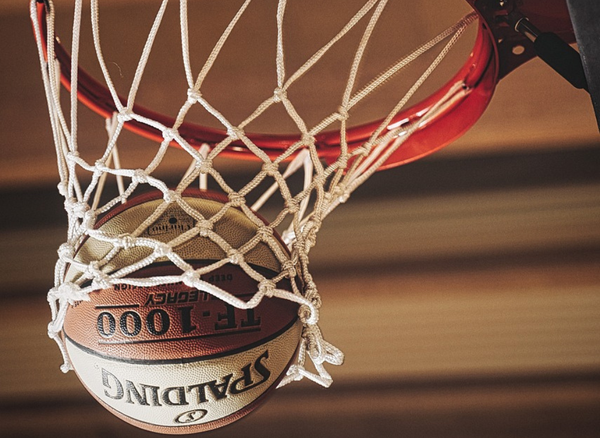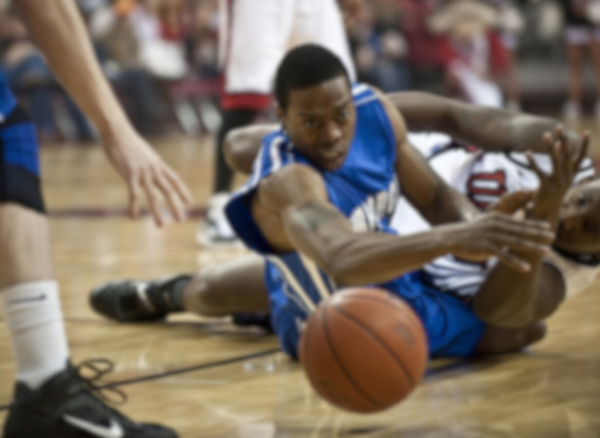Basketball is a game of speed, skill, and... fancy footwork? That's right! If you've ever watched a game and seen a player twist, turn, and juke defenders without taking a step, you've witnessed the magic of the pivot foot in action. But what exactly is this mystical appendage that seems to bend the laws of physics and the patience of defenders? Let's dive in, feet first!
The Pivot Foot
Imagine you're at a dance, and you've got one foot glued to the floor while the other boogies around.
Once a player holding the ball establishes a pivot foot, it becomes their anchor, their North Star, their best friend until they decide to dribble, pass, or shoot.
Now, if you're a young player or a pro like Kobe Bryant, knowing which foot is your pivot foot is absolutely essential. It's the difference between a smooth move and a facepalm-inducing traveling violation. If you catch the ball with both feet on the ground, the foot you don't lift first becomes your pivot foot. But if you land on two feet simultaneously, congratulations, you've performed a jump stop, and you can choose either foot as your pivot foot – just don't try to use both, or you'll be hopping your way to the bench.
Pivoting Without the Travel Brochure
So you've got your pivot foot down, and you're ready to whirl around defenders like a spinning top. But hold up! There's a catch. You can't lift your established pivot foot off the ground until you've either passed the ball, started a dribble, or begun your jump shot. If you are lifting the pivot foot off the floor before you do any of these things, the referees will be all over you like a bad suit, calling a traveling violation.
And let's talk about the gather step, a move that's as controversial as pineapple on pizza. When you're driving to the hoop and you pick up your dribble, you're allowed to take two steps – the "gather step" and the "first step." This is where things get tricky. If you're not consistent with a foot touching the ground, you might find yourself taking several steps more than allowed, and that's a one-way ticket to travel city.
Pivot Foot in Various Scenarios
Now, let's put this pivot foot knowledge into practice with a couple of real-game scenarios:
Post-Up
You're in the post, back to the basket, and you receive the ball. Your left foot is firmly planted – that's your pivot foot. You can use your right foot to step around the defender, fake a shot, or even do a little shimmy shake, but that left foot better stay on the floor like it's superglued, or you'll hear the whistle blow.
Perimeter Pivoting
You're standing beyond the arc, ball in hand, and you've got a defender in your face. You use your right foot as your pivot foot to step back and create space for that sweet jump shot. As long as your right foot maintains contact with the ground until you lift off for the shot, you're golden. But if that foot even twitches before you jump, you might as well have stepped on a landmine because you've just blown up the play.
Basketball Pivot Foot FAQ Section
Can you switch your pivot foot in basketball?
No, once you've established a pivot foot, you're in a committed relationship with it. You can't switch pivot feet without dribbling first, or you'll be called for traveling.
What happens if you lift your pivot foot?
If you lift your pivot foot before dribbling, passing, or shooting, you've committed a traveling violation. Keep that foot down until you make your next move!
Is the pivot foot rule the same in all basketball leagues?
While the basic concept of the pivot foot is consistent, different leagues like the NBA, NCAA, and NFHS may have slight variations in how they enforce pivot foot rules, especially regarding the gather step. Always check the rulebook for the league you're playing in.
Summary
In the whirlwind world of basketball, the pivot foot stands as the hero of the hardwood. It's the key to maintaining balance, avoiding traveling violations, and keeping defenders guessing. Remember, once you establish your pivot foot, treat it like the most loyal dance partner you've ever had – keep it close, and don't let it stray. Master your pivot foot, and you'll glide through the game with the grace of a gazelle and the precision of a chess master. Just don't forget to lift it at the right time, or you'll be doing the traveling dance all the way to the bench.









